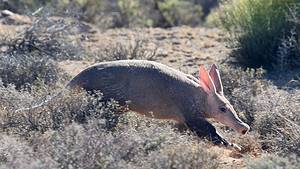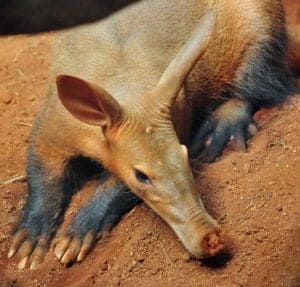Aardvarks and armadillos may look a bit similar. Infact, both animlas are mammals, but these two animals don’t share much else in common! Let’s take a deep dive into what the differences are between them while also learning a bit about both. They are some truly amazing creatures, so let’s get to it and discover: Aardvark Vs Armadillo; what’s the difference?
Main Differences Between Aardvark and Armadillo
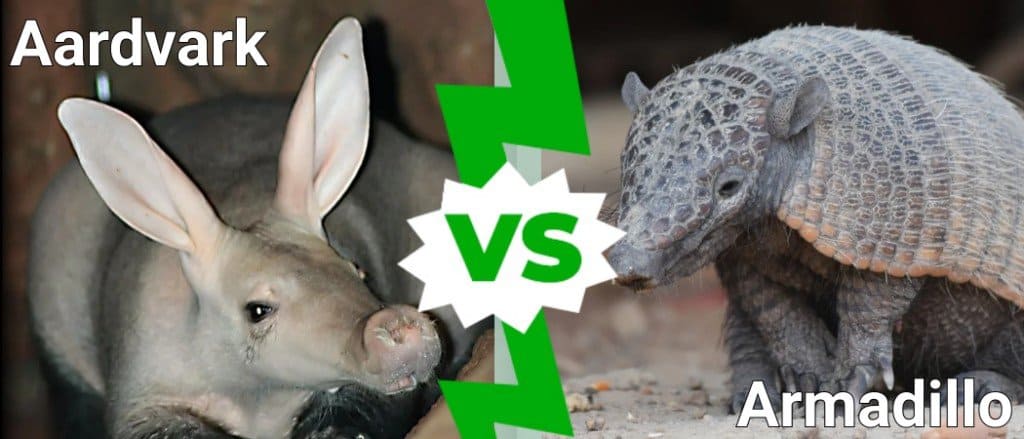
The main differences between an aardvark and an armadillo are their range, body structure, defense mechanism, and order. While aardvarks are natives of Africa, belonging to the Tubulidentata order, armadillos belong to the Cingulata and are found mainly in the Americas. Aardvarks have short furs that cover their body while armadillos have a bony armor called osteoderm around their body.
Typically, aardvarks defend themselves by hiding in burrows. And if they must challenge their attackers, they try scratching them with their claws. On the other hand, Armadillos are not much of a hider; they are known to protect themselves with their shell-like body.
Now, let’s dig deeper into the main differences between these two animals.
Aardvark Vs Armadillo: Range
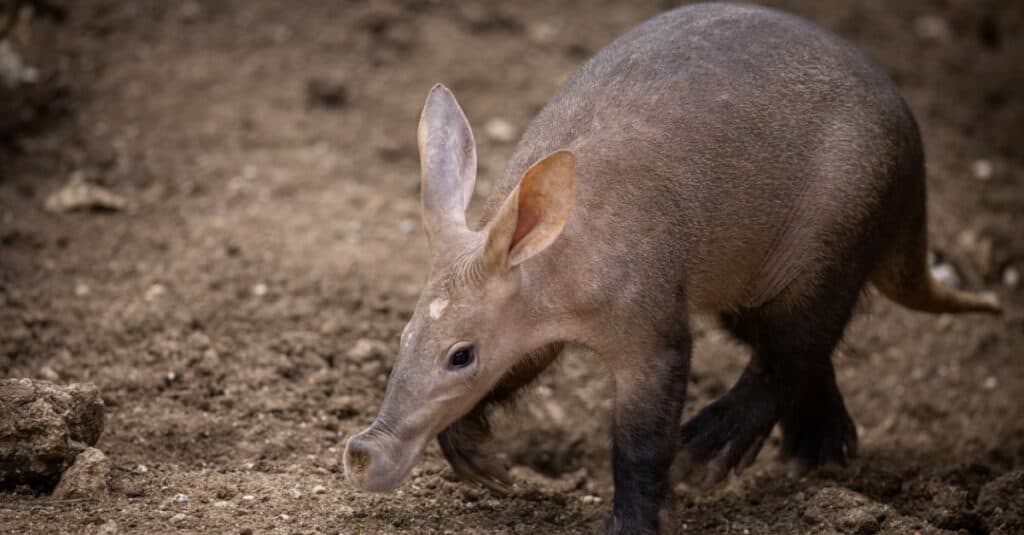
Aardvarks live in sub-Saharan Africa while armadillos live in South, Central, and North America.
©iStock.com/AB Photography
Aardvarks are medium-sized burrowing animals that look a bit like a pig and a rabbit had a baby. In fact, their name actually translates to “earth pig” in Afrikaans, which gives us a clue as to where they live. Aardvarks live exclusively in Africa, primarily in grasslands, savannas, rainforests, woodlands, and thickets to the south of the Sahara. Since they are borrowers, they don’t generally like rocky areas, but most other places are suitable.
Armadillos are small burrowing animals as well, only they look like a rabbit put on a suit of armor. Armadillos live in South America, Central America, and one species even lives in North America (the nine-banded armadillo). They prefer temperate and warm climates and mostly stick to rain forests, grasslands, and semi-deserts. For North Americans, the most likely place to see them is in arid and dry regions in the southwest. Armadillos haven’t always lived in North America, however, and have only recently started expanding in the mid-19th century.
Armadillos and aardvarks live in similar environments, even though they live in different geological regions separated by large oceans. The armadillo is a New World animal while the aardvark is found in Africa.
Aardvark Vs Armadillo: Diet
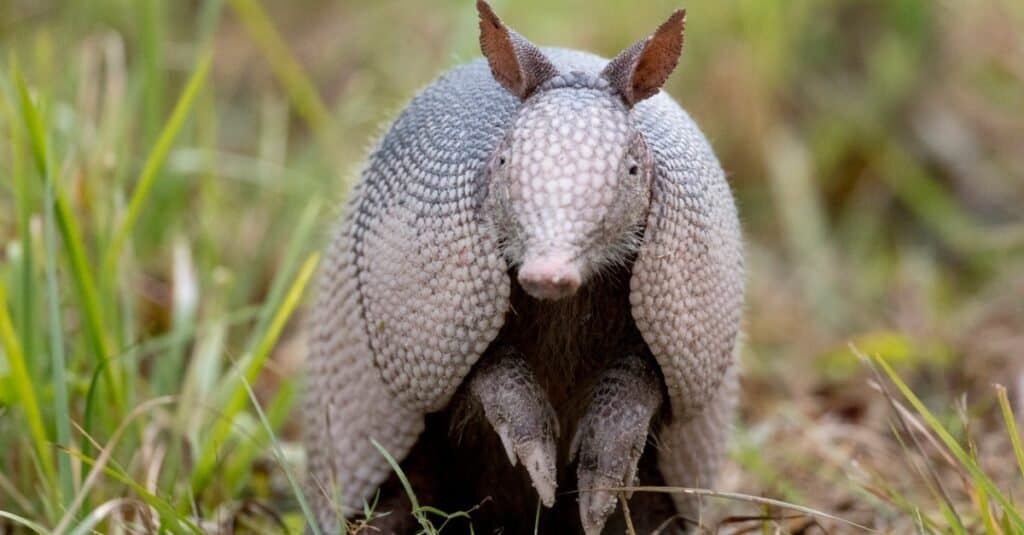
Armadillos eat bugs, larvae, and plants, while aardvarks exclusively eat ants and termites.
©iStock.com/6381380
Aardvarks are famous for their diets. They exclusively live on termites and ants, a dietary adaptation known as myrmecophagy. The only other food that aardvarks are known to eat, in fact, is the aardvark cucumber, in which the two share a symbiotic relationship. When the aardvark finds and eats the melon, they will loosen the soil, helping the fruit to grow.
Additionally, the melons survive the digestive system of the aardvark and are then defecated near the loose soil of the burrow, thus repeating the process. Still, ants and termites are the favorite food of the aardvark. Using its incredible nose, aardvarks will smell and then suck up as many as 50,000 termites. Their tongues are coated in sticky saliva that catches the insects as the aardvark sticks its 30 cm tongue into the nests.
Armadillos have a more general diet than that of an aardvark. Armadillos eat bugs, small vertebrates, plants, fruits, and occasionally carrion (rotting organic material). They get their food by using their strong claws and digging for it. Their small, peg-shaped teeth are designed to crunch small insects. Altogether, 90% of armadillos food is made up of insects and larvae.
While both eat bugs, the aardvark is much more specific in its diet of termites and ants. Armadillos will also eat scorpions, worms, and plants.
Aardvark Vs Armadillo: Armor and Protection
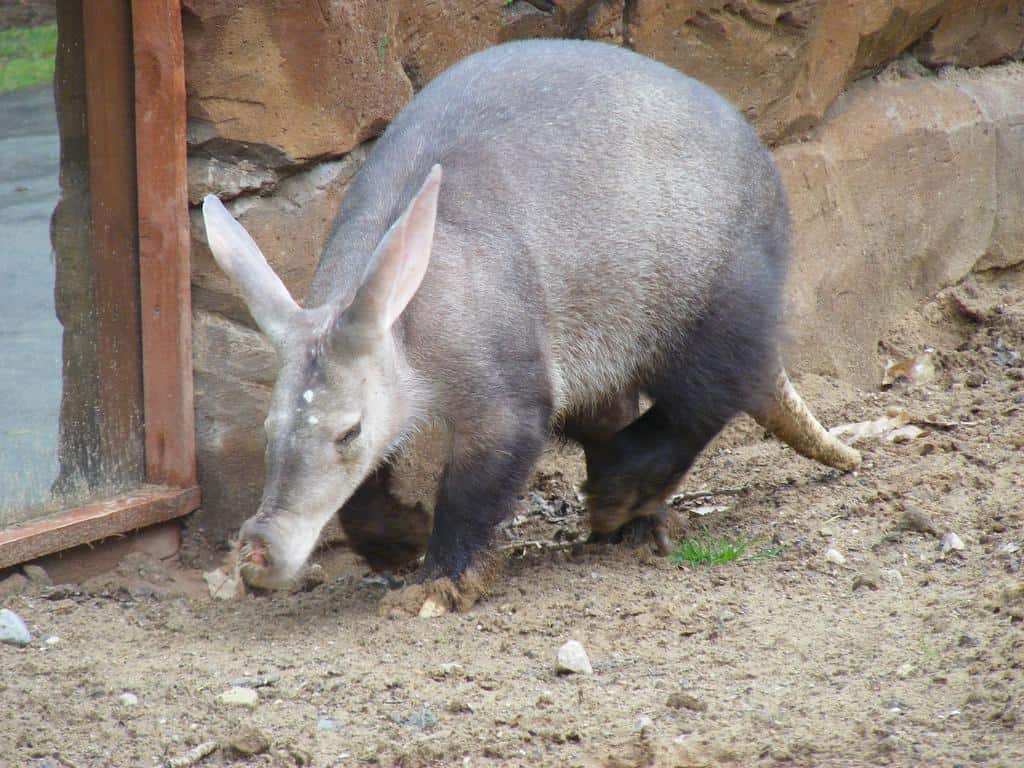
Aardvarks don’t have natural armor like armadillos are famous for.
©Marie Hale / CC0 1.0, Flickr – License
When it comes to defenses, aardvarks don’t have much. The main way that aardvarks defend themselves is to run into their burrow or to dig an emergency hole with their strong legs. When that doesn’t work, they will try and scratch an offending animal with those strong digging claws, although those aren’t all that effective when it comes to larger predators.
Armadillos, however, are rather famous for their defensive measures. These small animals have specialized bony armor that surrounds their bodies. Known as the osteoderm, this structure is made up of a top layer made of keratin tiles that lock together in small hexagons or triangles. These tiles are then connected through collagen fibers and are incredibly strong. In fact, their name means “little armored one” in Spanish. When they roll up and protect their organs and head, the strong armor is an effective deterrent for many predators.
Aardvark Vs Armadillo: Active Hours
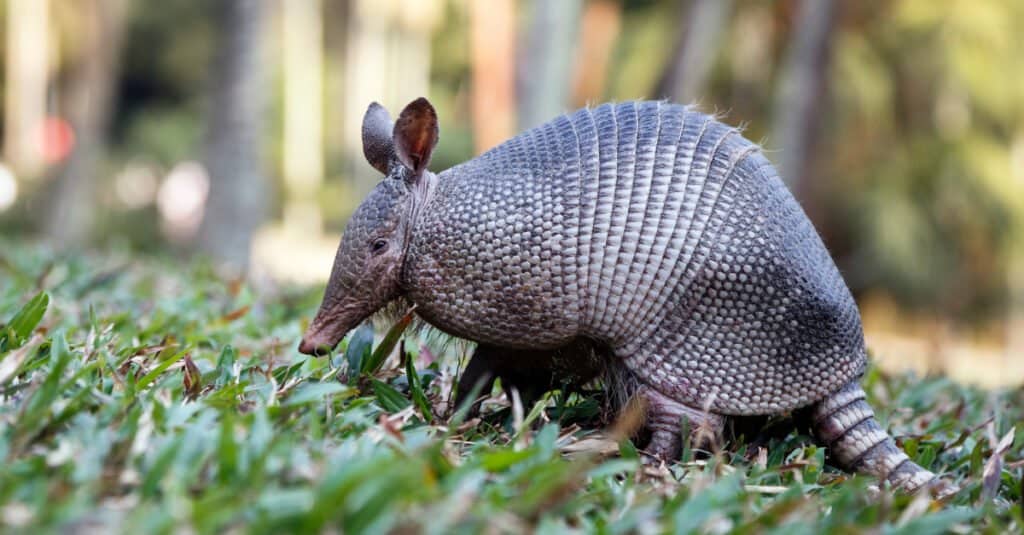
Aardvarks are most productive in the early night while armadillos are more active late at night.
©Klaus Balzano/Shutterstock.com
Aardvarks are nocturnal animals, meaning they are most active during the night. Generally, they will emerge from their burrow when it starts to get dark in the late afternoon or right after sunset. They will then forage for ants and termites with a range of 6-20 miles, a rather large area for an animal as small as they are. Additionally, they seem to be more active between 8 pm and 12 am.
Armadillos are also primarily nocturnal creatures, especially during the hottest portions of the day in arid regions. Armadillos will emerge during the night and are most active during the late hours of the morning, mostly 2 am to 5 am, so contact with humans during this time isn’t as common.
Both the aardvark and the armadillo are nocturnal animals, but they have different times when they are most active.
Aardvark Vs Armadillo: How do they nest?
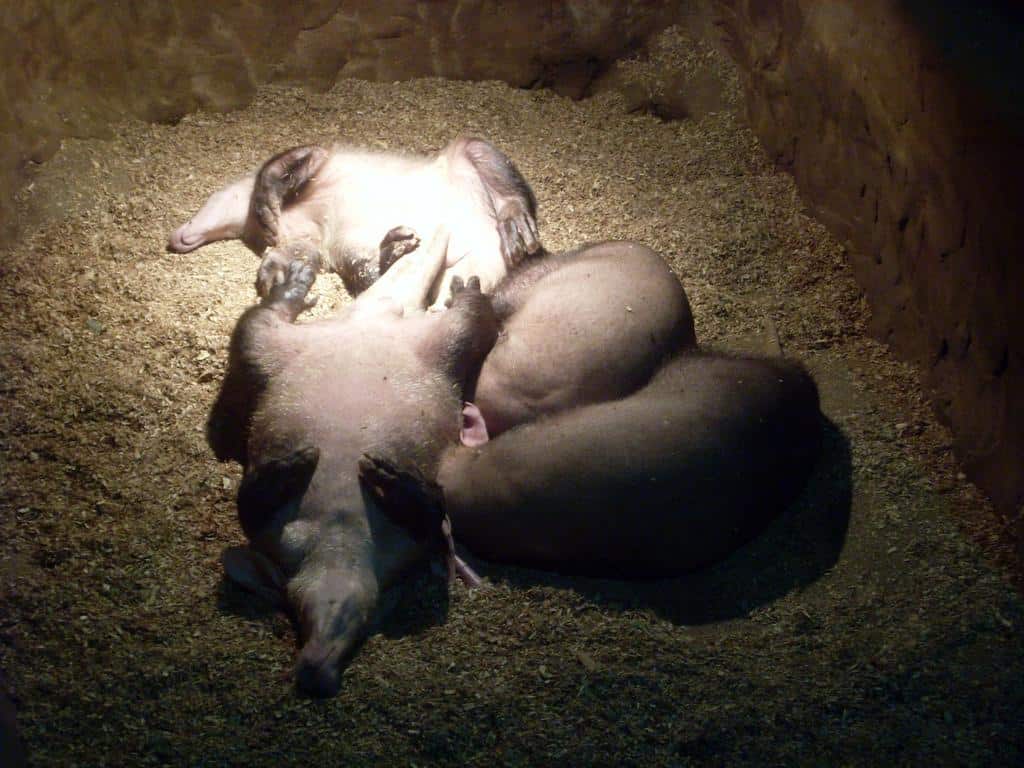
Both animals dig burrows to sleep in and seek shelter.
©Abi Skipp / CC BY 2.0, Flickr – License
Since both of these animals are prolific diggers, it’s no surprise that both of them house in similar ways. Aardvarks and armadillos both dig burrows into dirt using their strong arms and sharp digging claws. They will then sleep in these burrows during the hot portions of the day and will retreat to these burrows when threatened.
Aardvark Vs Armadillo: Evolutionary History
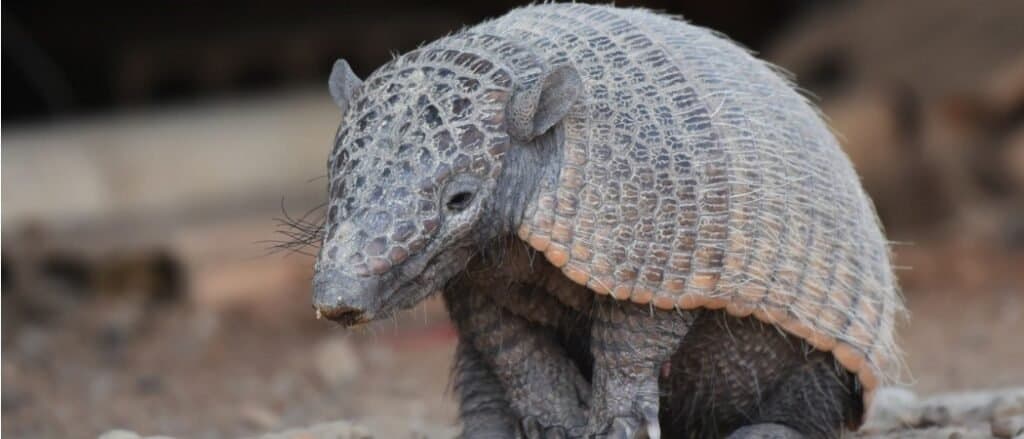
Aardvarks are incredibly unique on the evolutionary stage. Armadillos are related to
sloths
and anteaters.
©iStock.com/Rini Kools
Aardvarks have some of the most interesting evolutionary histories of any animal around. From the Orycteropodidae family, they are the only species left in their entire order of animals. In fact, its closest relatives have been extinct for 2 million years, showing how isolated they truly are. In fact, the aardvark is known as THE most evolutionary distinctive animal around, according to the EDGE scientific method.
Armadilloes have more “relatedness” to other animals, unlike aardvarks. In fact, they share a genetic ancestor with sloths and anteaters, making up the superorder known as Xenarthra. Armadillos likely evolved around 50 million years ago somewhere in South America.
The photo featured at the top of this post is © iStock.com/Saddako
Thank you for reading! Have some feedback for us? Contact the AZ Animals editorial team.



